Slava Ukraini! In early 2022 I began a Telegram channel aggregating news from a number of sources daily on the war in Ukraine. In June 2023 I began providing a daily draft for the Ukraine War Brief Podcast collecting news from over 70 sources daily, which formed the basis of the script. While the Podcast no longer exists I have continued to make this Brief available for my followers here on Substack for those who wish to keep up with the news from the war.
All the latest news on the Russo-Ukraine War 6 days per week
ALONG THE CONTACT LINE
GSAFU Morning Report
For: May 3, 2025
The General Staff of the Armed Forces of Ukraine in its Operational Information update at 08:00 on May 3 stated that day 1165 of the full-scale invasion of the Russian Federation against Ukraine had begun.
The situation on the line of combat remains tense in some sectors. Ukrainian defenders continue to actively counteract the Russian aggressor, causing them significant losses in personnel, equipment and technology. Exhausting the enemy along the entire front line and continuing to disrupt the plans of Russian occupiers to advance deeper into the territory of Ukraine.
During the past day, 216 combat engagements took place.
Over the past 24 hours, the enemy carried out 1 missile strike, 101 air strikes, used 2,694 drones and fired approximately 6,700 artillery shells across the positions of Ukrainian forces and civilians.
Air Force Daily Report
77 ENEMY UAVS SHOT DOWN, 73 SIMULATOR UAVS FAILED TO REACH THEIR TARGETS (LOCATIONALLY LOST)
➖➖➖➖➖➖➖➖➖
On the night of May 3, 2025 (from 20:30 on May 2), the enemy attacked with two Iskander-M ballistic missiles from the Rostov region and Crimea, 183 strike UAVs and other types of simulator drones from the regions: Bryansk, Kursk, Orel, Millerovo - Russia.
The enemy air attack was repelled by aviation, anti-aircraft missile units, electronic warfare equipment, and mobile fire groups of the Defense Forces of Ukraine.
As of 09:00, it has been confirmed that 77 Shahed attack UAVs (and other types of drones) have been shot down in the east, north, south, and center of the country.
73 enemy drones-simulators - lost in location (without negative consequences).
As a result of the enemy attack, the Kharkiv, Sumy, Donetsk, and Mykolaiv regions suffered.
Combat Operations in the Russian Federation
There have been no major changes to the combat environment since our last report.
The Khortytsia operational-strategic group
(Responsible for the northeastern part of Ukraine. )
Toretsk Sector: Russian forces recently advanced in the Toretsk direction amid an intensified effort to advance along and up to the T-0504 Pokrovsk-Kostyantynivka highway and eliminate the Ukrainian salient southwest of Toretsk.
Geolocated footage published on May 1 indicates that Russian forces advanced into Novoolenivka (southwest of Toretsk).
The Tavria operational-strategic group
(Responsible for the central-eastern and southeastern part of Ukraine.)
Zaporizhia Sector: Russian forces recently advanced in western Zaporizhia Oblast.
Assessed Russian advances: Geolocated footage published on Apr 27 indicates that Russian forces recently marginally advanced northeast of Mali Shcherbaky (west of Orikhiv).
The Odesa operational-strategic group
(Responsible for Kherson, Qırım, (also known as Crimea) and the Black Sea.)
There have been no major changes to the combat environment since our last report.
TEMPORARILY OCCUPIED TERRITORIES
Nothing major to report.
THE HOME FRONT
5 killed, 61 injured in Russian attacks on Ukraine over past day
Russia launched an overnight attack on Ukraine using two Iskander-M ballistic missiles and 183 drones of different types, killing five civilians and injuring at least 61 others, the Kyiv Independent reported citing Ukrainian authorities on May 3.
The heaviest casualties were reported in Kharkiv, where 51 people, including two children aged 11 and 16, were injured in a mass drone attack late on May 2, according to the Kharkiv Regional Prosecutor’s Office. Russian forces launched at least 15 Geran-2 drones at the city, triggering fires and widespread destruction across the Osnovianskyi, Slobidskyi, Saltivskyi, and Kyivskyi districts.
In other parts of Kharkiv Oblast, including Kupiansk and Bohodukhiv districts, Russian strikes killed one, damaged homes, a store, an apartment building, and a warehouse. In total, four settlements and the city of Kharkiv were hit, Governor Oleh Syniehubov said earlier.
In Kupiansk district, strikes damaged a private home, store, apartment building, and other civilian infrastructure. In Bohodukhiv district, two homes and a warehouse were damaged or destroyed.
In the city of Kupyansk, Russian troops carried out a direct hit with an aerial bomb (ABM) on the building of the state fire and rescue unit of the State Emergency Service
In Donetsk Oblast, four people were killed, and eight more were injured, Governor Vadym Filashkin said. He emphasized that casualty figures exclude Russian-occupied Mariupol and Volnovakha.
In Sumy Oblast, Russian forces injured two civilians in the Seredyna-Buda community amid nearly 130 attacks across 43 settlements in one day, regional officials said. Russian attack damaged homes, a post office, educational institutions, and other infrastructure across several communities.
In Mykolaiv Oblast, Russia launched Shahed drones at Mykolaiv city, targeting industrial sites overnight. No injuries were reported, according to Governor Vitalii Kim. Additional drone strikes hit settlements in the Mykolaiv and Ochakiv districts throughout the day on May 2, also without casualties.
Ukrainian President Volodymyr Zelenskyy has repeatedly called for a 30-day ceasefire, saying on April 23, Ukraine insists on an "immediate, full, and unconditional ceasefire."
He added that Ukraine had also proposed halting strikes on civilian infrastructure and establishing "lasting silence" across land, sea, and air.
"Russia has responded to all this with new shelling and new assaults," he said.
RUSSIAN WORLD
Ukrainian sea drone downs Russian fighter jet in 'world-first' strike
A Russian Su-30 fighter jet was destroyed by a sea drone strike carried out by Ukraine's military intelligence, marking the first time a sea drone takes down a jet, Ukraine's military intelligence reported on May 3.
The intelligence agency, HUR, said the unprecedented operation took place on May 2 near the Russian port of Novorossiysk in the Black Sea and published the video of the strike. The strike was carried out by Group 13, a special unit within HUR, using a Magura sea drone equipped with a missile warhead.
"This is the world's first destruction of a combat aircraft by a naval drone," the statement read.
The multi-role Su-30 fighter, valued at approximately $50 million, was reportedly hit in midair and crashed into the sea.
The operation was conducted in coordination with Ukraine’s Security Service (SBU) and the country’s defense forces, according to the intelligence agency.
The pro-Russian Telegram channel Rybar reported the incident late Friday, writing, “Unfortunately, the enemy attack did not go unanswered. Yesterday evening, a Su-30 naval aviation fighter was hit 50 kilometers west of Novorossiysk by a drone boat carrying an R-73 surface-to-air missile.”
Ukraine had previously used the Magura V5 drone to down two Russian Mi-8 helicopters on Dec. 31, 2024, in what was then considered a world-first drone strike on airborne targets from the sea.
The integration of R-73 infrared-guided missiles onto USVs reflects Ukraine’s evolving capability to project air-denial threats beyond land-based systems.
Overnight on May 3, local Russian officials claimed that a Ukrainian drone attack on Krasnodar Krai injured four people, and damaged homes and a grain terminal in Novorossiysk. A state of emergency was declared in the city, while the Russian Defense Ministry claimed that over 170 Ukrainian drones and several naval drones were intercepted across Crimea and the Black Sea.
RELATED INTERNATIONAL NEWS
Zelenskyy rejects Putin’s ‘theatrical’ proposal, backs US 30 day ceasefire plan
Ukrainian President Volodymyr Zelenskyy dismissed Russian President Vladimir Putin’s proposal for a three-day ceasefire from May 7–9 as a "theatrical performance" designed to ease Russia’s international isolation and create a favorable atmosphere for the Victory Day celebrations in Moscow, Interfax Ukraine reported on May 3.
Speaking to journalists in a closed-door session, Zelenskyy reportedly said the proposal was not a serious attempt to end the war and reiterated Ukraine’s support for a U.S.-backed strategy calling for an unconditional 30-day ceasefire.
Zelenskyy warned that Moscow’s history of violating short-term truces undermines any trust in its latest offer.
"They kill until the 7th, pause for a couple of comfortable days, then start attacking again on the 11th," he said.
Putin’s announcement, presented as a "humanitarian truce" from midnight May 8 to midnight May 11, came as the Kremlin continues to reject Ukraine’s calls for a complete cessation of hostilities. More than 50 days ago Ukraine has accepted the U.S.-proposed 30-day ceasefire, but Moscow rejected it, demanding a complete halt on military aid to Ukraine.
"An unconditional ceasefire is a model that the Americans have proposed. We are following it. From this date or another date, preferably earlier," Zelenskyy said. "Yes, let's try 30 days. Why a 30-day ceasefire? Because it is impossible to agree on anything in three, five, seven days."
He suggested Putin’s initiative was a gesture intended to simulate goodwill in response to peace signals reportedly delivered by U.S. President Donald Trump’s Special Envoy Steve Witkoff.
"This is more of a theatrical performance on his part. Because it is impossible to build any plan for the next steps to end the war in two or three days,” Zelenskyy added.
The Ukrainian president said Kyiv is willing to begin the 30-day truce at any time — "the 1st, 3rd, 5th, or if he needs the 7th — fine, then from the 7th for 30 days." He emphasized, however, that without proper monitoring, any temporary pause risks being exploited by Russia.
Zelensky said Ukraine had shared its position with the U.S., U.K., and France, and that Washington understood Russia’s proposal was unserious. "At least the official position of the White House is that they see this as just games on his part," Zelensky said.
The Victory Day ceasefire is the latest in a series of truce initiatives announced by Moscow, which it has itself repeatedly violated. Earlier this month, Russia declared a ceasefire over the Easter holiday, though Zelenskyy accused Moscow of nearly 3,000 violations between April 19 and April 21. Ukraine has also said that Russian forces repeatedly breached a partial truce on attacks against energy facilities brokered on March 25.
Russia has repeatedly proclaimed its supposed readiness for peace talks while simultaneously pushing for maximalist demands. Kyiv has dismissed these declarations as a propaganda stunt, noting that Russian forces have only intensified their attacks on Ukrainian cities and towns.
Europe to hand billions in frozen Russian cash to Western investors, sources say.
Euroclear plans to seize and redistribute about 3 billion euros ($3.4 billion) of Russia's funds that are frozen at the Belgian clearing firm after Moscow grabbed investor cash in Russia, according to documents and people familiar with the matter. Reuters reported on May 2.
Euroclear, or the Euroclear Group, is a Belgium-based financial market infrastructure group that specialises in the central securities depository (CSD) segment.
The money will be used to compensate Western investors after Moscow seized cash held in Russia in recent months, three people said, escalating attempts by both sides to recoup billions in funds affected by the war in Ukraine.
Euroclear will redistribute 3 billion from a pool of 10 billion euros in cash belonging to Russian entities and individuals hit by European Union sanctions following Moscow's 2022 invasion of Ukraine, two of the people said.
The move, reported in detail here for the first time, marks a new level of reprisal by Europe. The European Union changed its sanctions regime late last year, allowing a disbursement to Western investors, opens new tabin such circumstances.
In the past, the West has engineered loans and payments to Ukraine, opens new tab from the interest on frozen Russian assets, which Russian President Vladimir Putin has denounced as theft.
The planned Belgian payout was triggered by Russian government orders to confiscate billions from Western investors last year. Euroclear has been under pressure from international investors to release money. Reuters could not determine which of them would benefit from payout.
Euroclear in March gained clearance from Belgium, its principal legal authority, to make the payout, according to the people who spoke to Reuters.
Euroclear has notified clients of the upcoming payments in an April 1 briefing document, reviewed by Reuters.
"We received authorisation from our competent authority, to unfreeze the compensation amounts and make these available to our participants," the document said.
Reuters could not establish the identity of the Russian owners whose assets will be seized.
Belgium's government declined to comment, while Russia's finance ministry did not respond to a request for comment.
Euroclear has emphasised that it implements sanctions but the company does not take decisions about the shape of sanctions or their lifting.
The payments to Western investors won't dip into the more than 200 billion euros of Russian central bank reserves that have been frozen in the EU, the two people said.
It will, however, reduce the stockpile of Russian wealth, that includes cash, shares and bonds, held almost entirely at Euroclear that gave the bloc leverage over Moscow. Some hoped frozen Russian assets could be used to rebuild Ukraine.
Western investors have tens of billions of assets stranded in Russia from seized factories to cash.
Europe's decision to release frozen Russian wealth in Europe to investors is viewed critically by some.
"To seize Russian assets and give them to Western investors would be morally reprehensible," said Jacob Kirkegaard, a sanctions expert with the Peterson Institute for International Economics, a Washington-based think tank.
"It would represent a political decision to prioritise Western businesses over the taxpayer. Any frozen assets that don't go to Ukraine's reconstruction will ... have to be covered by tax payers."
The European Union froze hundreds of billions of Russian assets - including the central bank reserves - following Russia's invasion of Ukraine in February 2022, in an unprecedented move that amounted to its single biggest penalty to Russia.
Euroclear holds the lion's share of sanctioned Russian wealth in Europe - more than 180 billion euros.
Getting that money back is important for Moscow and has prompted roughly 100 court actions against Euroclear, one of the people said. Reuters could not determine the status of those court cases.
Moscow has warned last year that it would retaliate if its frozen assets were seized and used for Ukraine and made a change in the law earlier this year, allowing it to do so.
In past months, Moscow has seized 3 billion euros of cash held by Euroclear at a depository in Russia to compensate Russian investors hit by Western sanctions, two of the people said.
Clearstream, an arm of the German stock exchange that like Euroclear warehouses securities such as stocks and bonds for traders, also found itself in a similar situation.
The Luxembourg-based firm will also make similar payouts from frozen Russian cash to Western investors but on a smaller scale, one person familiar with the matter said.
The sum concerned is several hundred million euros, the person said. Clearstream declined to comment.
Two people familiar with the case said it amounted to a swap of Western money frozen in Russia with Russian cash blocked in Europe, initiated by Moscow.
Moscow's efforts to unlock its frozen assets come as its economy labours under a fourth year of international sanctions imposed because of the war. Russia continues to bomb Ukraine amid talks between Washington and Moscow to end the war, which have left Europe on the sidelines.
MILITARY & TECH
At The Current Rate, It Would Take Russia Centuries And Tens Of Millions Of Casualties To Capture Ukraine.
Russian forces managed to capture around 68 square miles of Ukraine in April. But it cost them 4,800 vehicles and more than 36,600 dead and wounded troops, David Axe of Forbes reported citing a statistician who collects data mostly from official Ukrainian sources including the general staff in Kyiv.
In the same month, Ukrainian losses were “minimal,” concluded analyst Konrad Muzyka of Rochan Consulting in Poland.
Ukraine sprawls across 233,000 square miles, 19% of which is under Russian occupation. At the current rates of advance and loss, the Russians would capture the rest of Ukraine in the year 2256 at the cost of 101 million casualties. The current population of Russia is 144 million.
Incredibly, staggering losses in people and equipment haven’t yet crippled the Russian military in Ukraine. The Kremlin is equipping its forces with thousands of civilian vehicles, including scooters, compact cars and even at least one bus.
Meanwhile, it’s recruiting 30,000 troops per month, Gen. Christopher Cavoli, commander of U.S. Army forces in Europe, told U.S. lawmakers on April 3. Since many of the wounded eventually return to the front line, the Russian armed forces recruit more people every month than they lose.
As a result, Cavoli said, the Russian force in Ukraine is actually growing. It now numbers no fewer than 600,000 troops, “the highest level over the course of the war and almost double the size of the initial invasion force” in February 2022, Cavoli said.
How the Kremlin has managed to sustain and even expand its recruitment effort comes down to two things: money and mood. Record enlistments are “driven by high sign-on bonuses and speculation that the war will soon be over,” explained Janis Kluge, deputy head of the Eastern Europe and Eurasia Division at the German Institute for International and Security Affairs.
Whether the money and good vibes are sustainable is an open question. “All told, Russia’s defense budget will account for 40% of all government expenditures which is at its highest level since the Cold War,” Cavoli said. By comparison, the United States spends just 13% of its federal budget on the military.
The spending has buoyed Russians’ attitude toward the war, even as total casualties exceeded 800,000 earlier this year. “As a direct result of its defense spending, Russian investments in its industrial base have reduced national unemployment to 2.4%,” Cavoli said. “The Russian economy is on a war footing and will remain so for the foreseeable future.”
But a war footing isn’t always very efficient. Russian Finance Minister Anton Siluanov has vowed to maintain the elevated military spending even as plummeting oil prices and the damage from Ukrainian drone attacks squeeze revenue from energy exports, cutting economic growth in Russia by more than half compared to a year ago.
To prolong the wartime spending spree, Russian Pres. Vladimir Putin raised personal and corporate taxes last year. “Russia’s leadership is not only prepared to increase the tax burden on Russians but is also shifting its economic development priorities,” explained Alexander Kolyandr, an analyst with the Center for European Policy Analysis in Washington, D.C. Obviously, war industries are the priority.
Losing a lot to gain very little in Ukraine and sustaining the costly effort through massive spending, Russian leaders are walking an economic and political tightrope.
But the danger hasn’t dissuaded them. According to Cavoli, Putin and his ministers and generals are committed to a long war—one that could widen beyond Ukraine. “The Russian regime has refashioned its military, economic and social structures to sustain what it describes as a long-term confrontation with the West—systemic changes that illustrate Russia’s intention to confront us into the foreseeable future,” Cavoli warned.
Russian gains continue to decline while casualties remain high and the quality of troops continues to get worse.
The Institute for the Study of War (ISW), a US based think tank, in its May 2 Russian Offensive Campaign Assessment reported that Russian gains along the frontline have slowed over the last four months, but Russia continues to tolerate personnel losses comparable to the casualty rate Russian forces sustained during a period of intensified advances between September and Dec 2024.
ISW assesses that Russian forces gained a total of 1,627 square kilometers in Ukraine and Kursk Oblast in Jan, Feb, Mar, and Apr 2025, and daily Russian casualty reports from the Ukrainian General Staff indicate that Russian forces suffered 160,600 casualties during the last four months for an average of 99 casualties for every square kilometer taken over the last four months.
ISW assesses that Russian forces seized an estimated 496 square kilometers in Jan 2025; an estimated 313 square kilometers in Feb 2025; an estimated 601 square kilometers in Mar 2025; and an estimated 217 square kilometers in April 2025. Ukrainian General Staff reports indicate that Russian forces lost an estimated 48,060 casualties in Jan 2025, 35,300 casualties in Feb 2025, 40,670 casualties in Mar 2025, and 36,570 casualties in Apr 2025.
Russian advances significantly increased in Mar 2025 due to the elimination of the Ukrainian salient in Kursk Oblast, coinciding with the temporary cessation of US intelligence sharing with Ukraine, although Russian advances on average decreased between Jan, Feb, and Apr 2025. Russian gains have also slowed as Russian forces come up against more well-defended Ukrainian positions in and around larger towns such as Kupyansk, Chasiv Yar, Toretsk, and Pokrovsk over the last four months.
Russian forces are currently sustaining a higher casualty rate per square kilometer gained than in Fall 2024. Russian forces gained an estimated 2,949 square kilometers at the cost of 174,935 casualties between Sep and Dec 2024 — an average of 59 casualties per square kilometer taken.
Russian casualty rates consistently increased throughout Sep, Oct, Nov, and Dec 2024 and peaked at an estimated 49,135 total monthly casualties in Dec 2024. Monthly Russian rates of advance plateaued at 839 square kilometers in Nov 2024, however, and began to slow in Dec 2024 to an assessed 593 square kilometers and have continued to slow in 2025 (with the exception of the elimination of the Kursk salient). Russian gains have been 45 percent slower between Jan and Apr 2025 than in the period between Sep and Dec 2024, although Russian casualty rates have only decreased by 10 percent in that interval. The Russian military command thus appears to be tolerating similar personnel loss rates despite a significant decrease in the rate of territorial gains.
Russia has thus far sustained these casualties and the current tempo of offensive operations by rapidly deploying low quality troops to frontline units, although the reliance on such troops is also hindering Russia's ability to conduct complex operations and make rapid advances in Ukraine. ISW has not observed a notable decrease in the tempo of Russian offensive operations along the frontline in recent months, despite the slowing rates of advance, suggesting that Russia is generating enough forces to sustain these casualties without having to deprioritize any frontline area. ISW has repeatedly observed reports that new Russian recruits only receive a month of training before deploying to Ukraine, and this limited training is likely constraining recruits' combat capabilities and the Russian military's overall capacity to successfully conduct complex operations.
The Russian military command is currently prioritizing funneling poorly trained recruits into highly attritional infantry assaults to offset personnel losses in Ukraine while sustaining the current tempo of operations, possibly at the expense of Russia's long-term warfighting capabilities. The Russian military does not have a reserve pool of well-trained troops who are not currently engaged in combat in Ukraine and can rapidly deploy along the frontline, and the Russian military command's decision to funnel poorly trained troops to the frontline in Ukraine is undermining Russia's ability to create a pool of such forces.
FMS Deal for Ukraine Approved for the First Time Under Trump's Second Term.
The U.S. Department of State approves the sale of services and equipment to Ukraine for the maintenance of F-16 fighter jets. This is not only about maintaining the combat capability of the aircraft, but also about setting another precedent in the context of decisions made during Trump's second term. Defense Express reports.
On Friday, May 2, the U.S. Defense Security Cooperation Agency (DSCA) released a statement saying that the U.S. State Department had approved the potential sale of training and support services, as well as related equipment, for F-16 multirole fighter jets to the Ukrainian government under the Foreign Military Sales (FMS) program.
It is noted that the total amount for which the sale will be approved is $310.5 million. At the same time, the final amount may ultimately be lower, in accordance with the terms and conditions to be defined by the signed agreements. The DSCA statement also mentions that the request for the purchase of equipment and services in support of F-16 aircraft was submitted by the Ukrainian government.
This includes a range of equipment and services, including aircraft modification and upgrades, personnel training related to operation, spare parts, consumables and ground equipment, classified and unclassified software delivery and support, technical documentation, research; engineering, technical and logistics services.
The list of companies that will be the main contractors includes Valiant Integrated Service, Top Aces Corporation, Lockheed Martin Aeronautics, Pratt and Whitney, Snap-on, Inc., BAE Systems, AAR Corporation, Comsetra, LLC.
In the context of this announcement, it should be noted that the Foreign Military Sales program is an intergovernmental agreement under which the United States provides weapons to customers. At the same time, the State Department's notification is only a permit for the sale, not an actual contract.
Another question is who should pay for these services. It should be noted that the DSCA provides a clear answer to this question: countries authorized to purchase arms under FMS can do so either at their own expense or with funds provided through U.S.-funded assistance programs. At the same time, it is currently unclear whether Ukraine will cover the cost of this potential agreement itself or if the funding will come from the resources allocated to Ukraine during Joe Biden's presidency.
Although sales under the FMS program are not new for Ukraine, the U.S. Department of State has previously granted such authorizations to Ukraine (during Joe Biden's presidency), including a package of support services and equipment for the F-16, which was approved last December. At the same time, it is important to note that this is the first time that a sale under FMS has been approved for Ukraine during Trump's second term.
The United States has also recently approved a $50 million weapons sale to Ukraine under the Direct Commercial Sales (DCS) program. We have described in detail what the sale of arms under the DCS mechanism entails in a separate publication.
That’s it for today’s Brief folks if you would like to keep up with events in Ukraine daily please consider subscribing, it’s free!


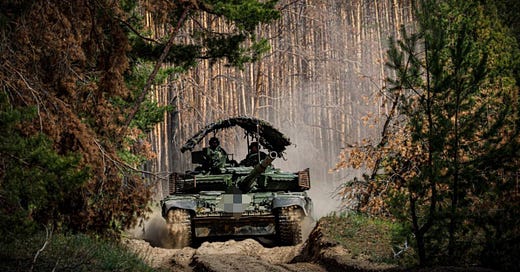




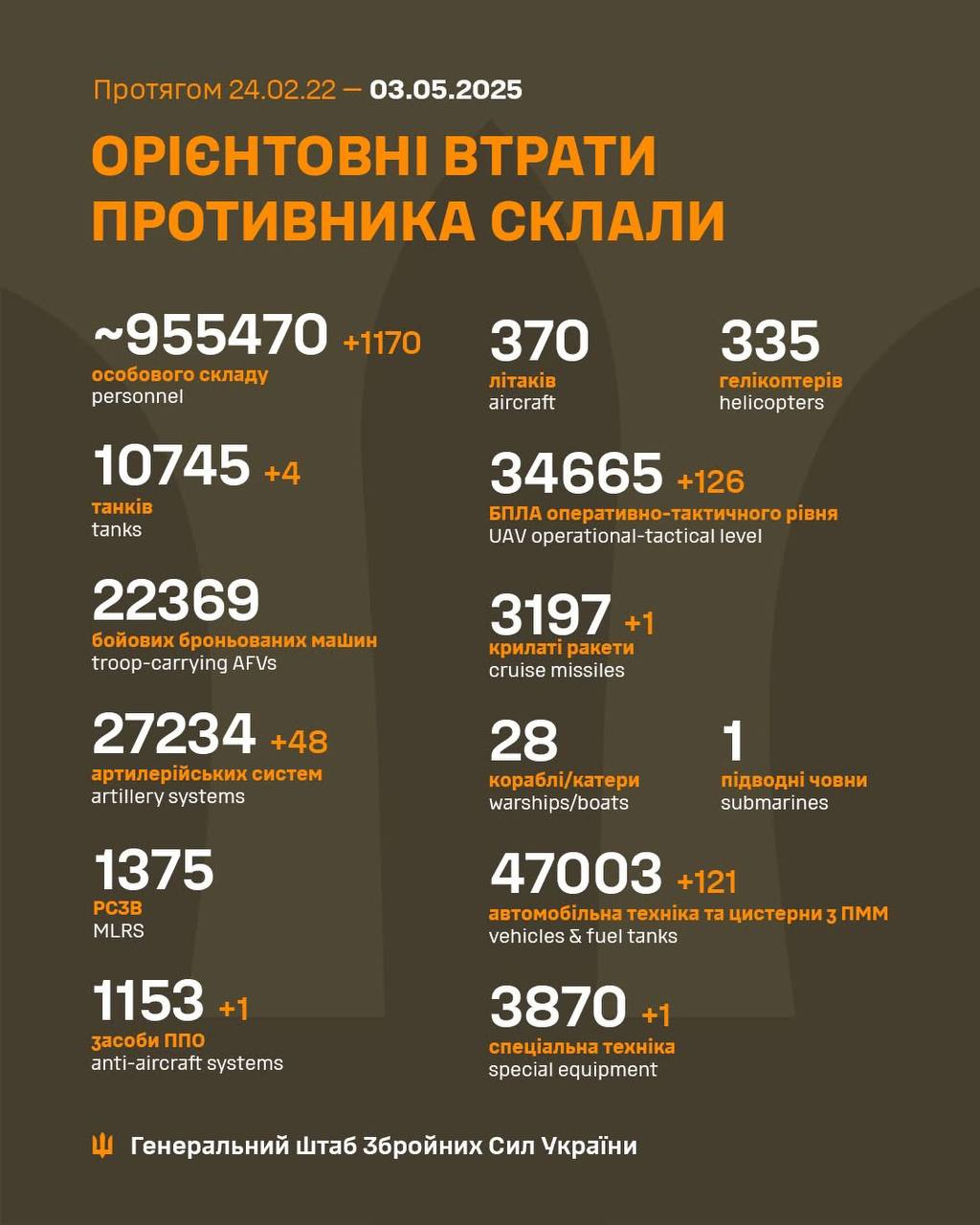


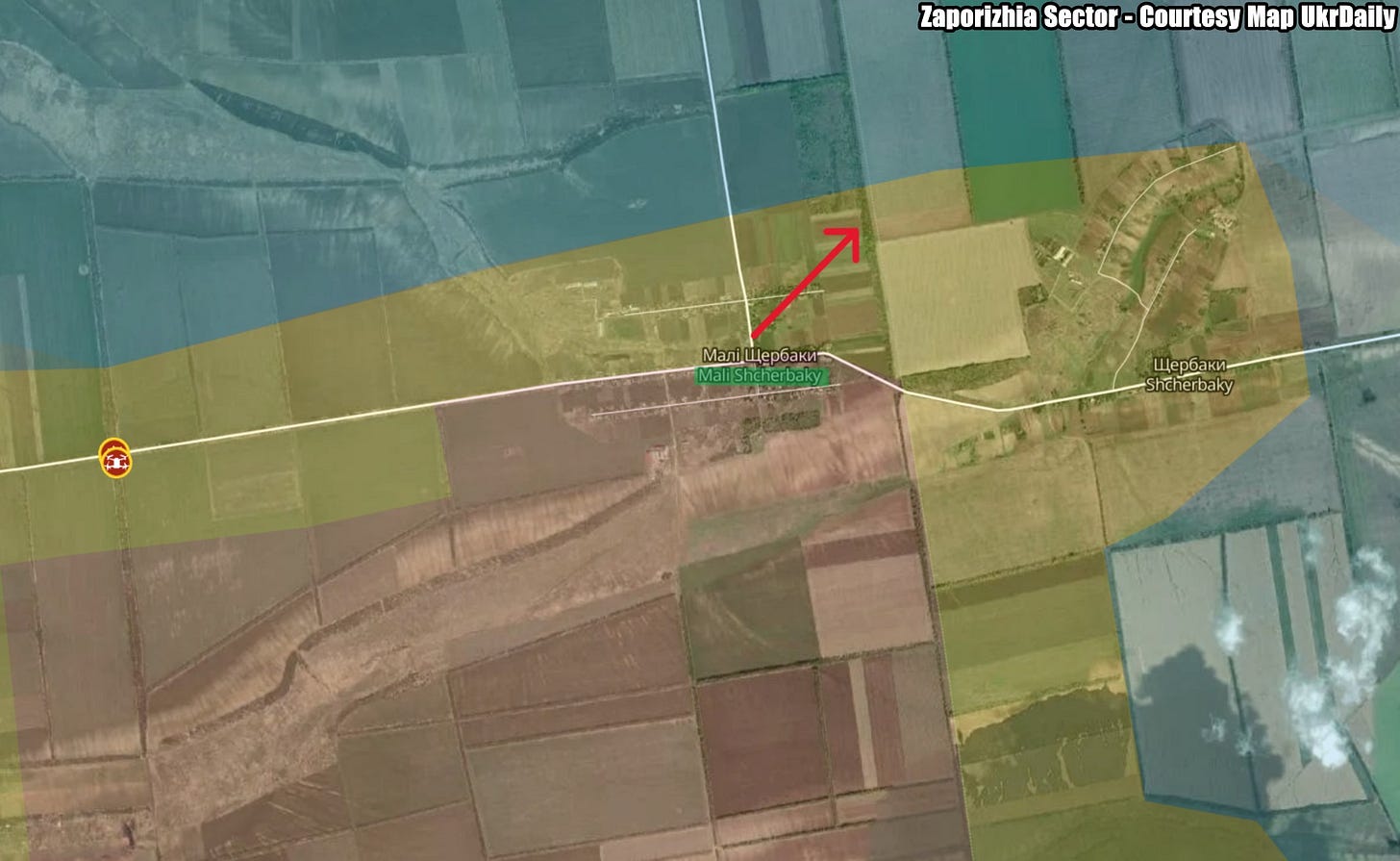

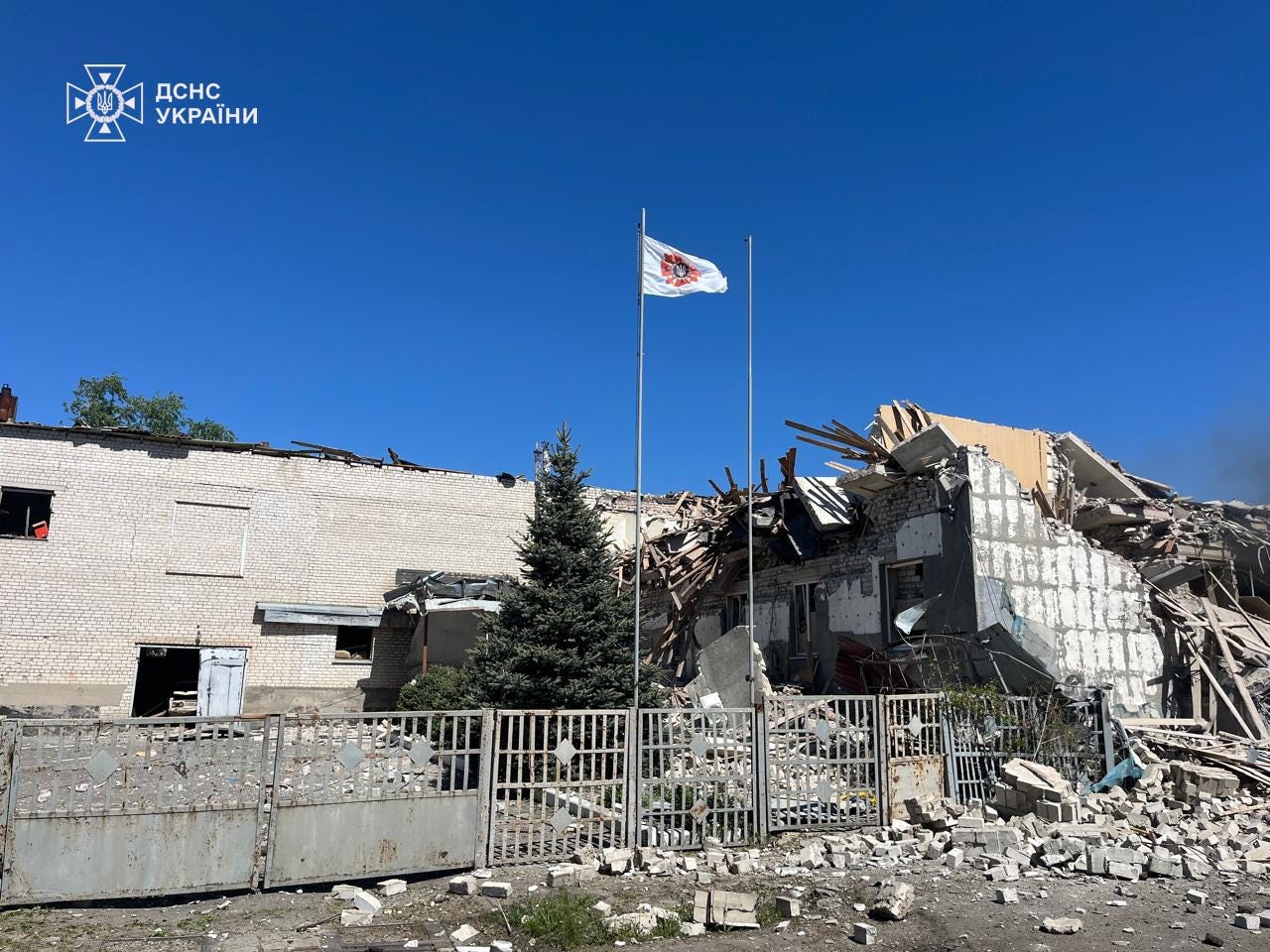

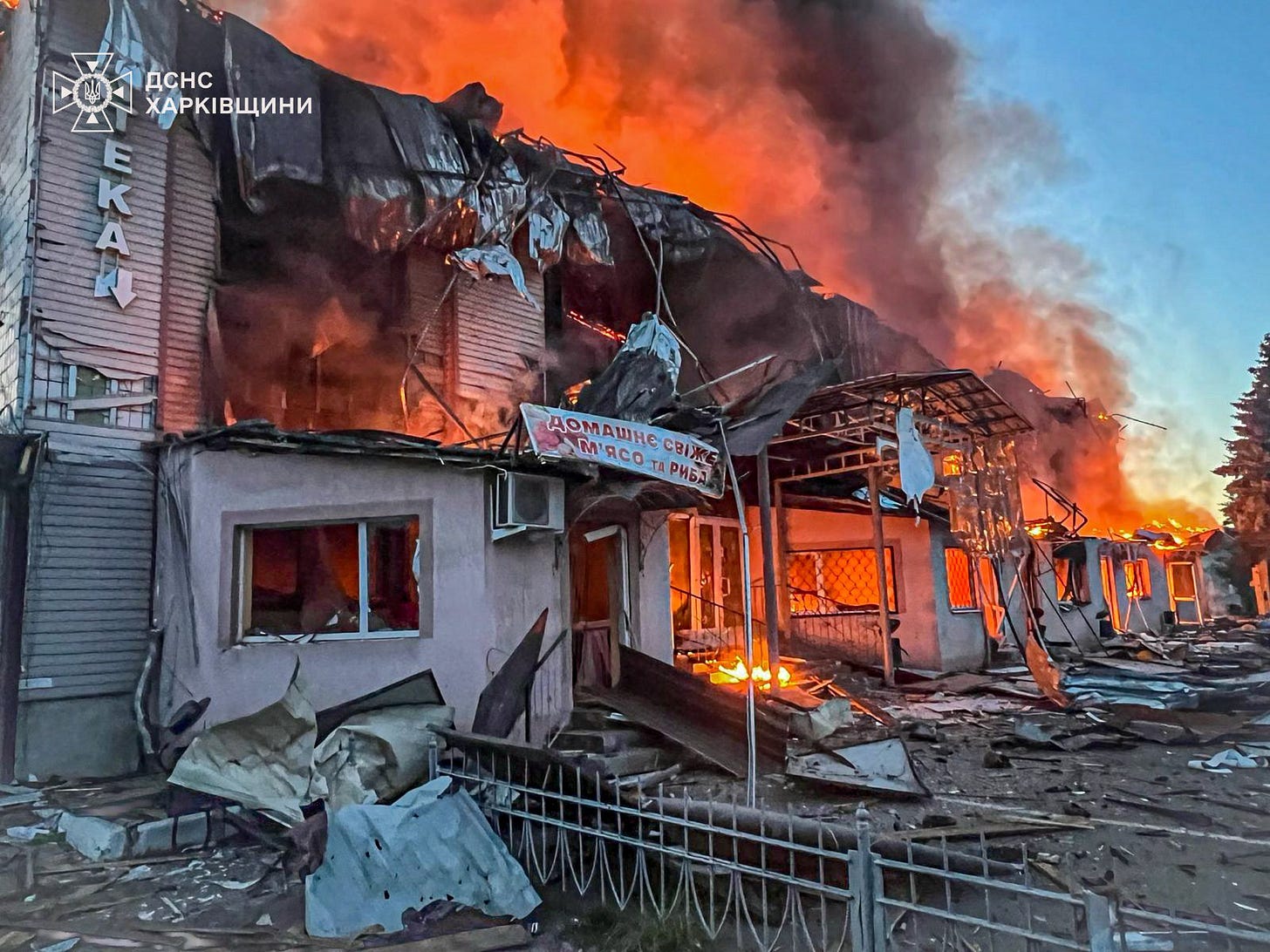

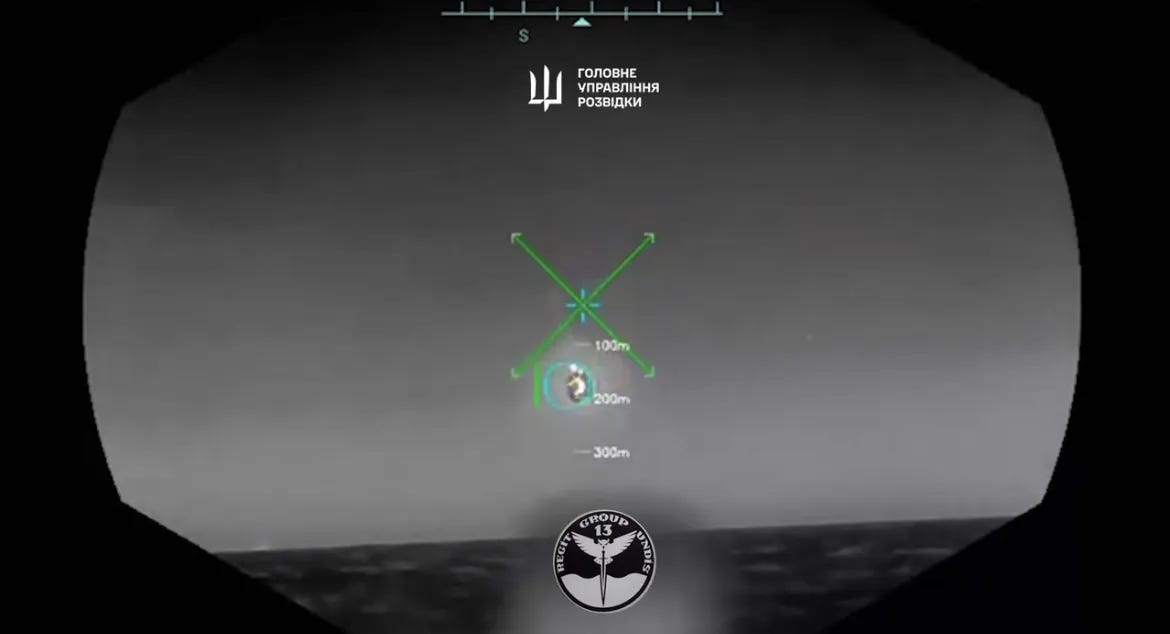


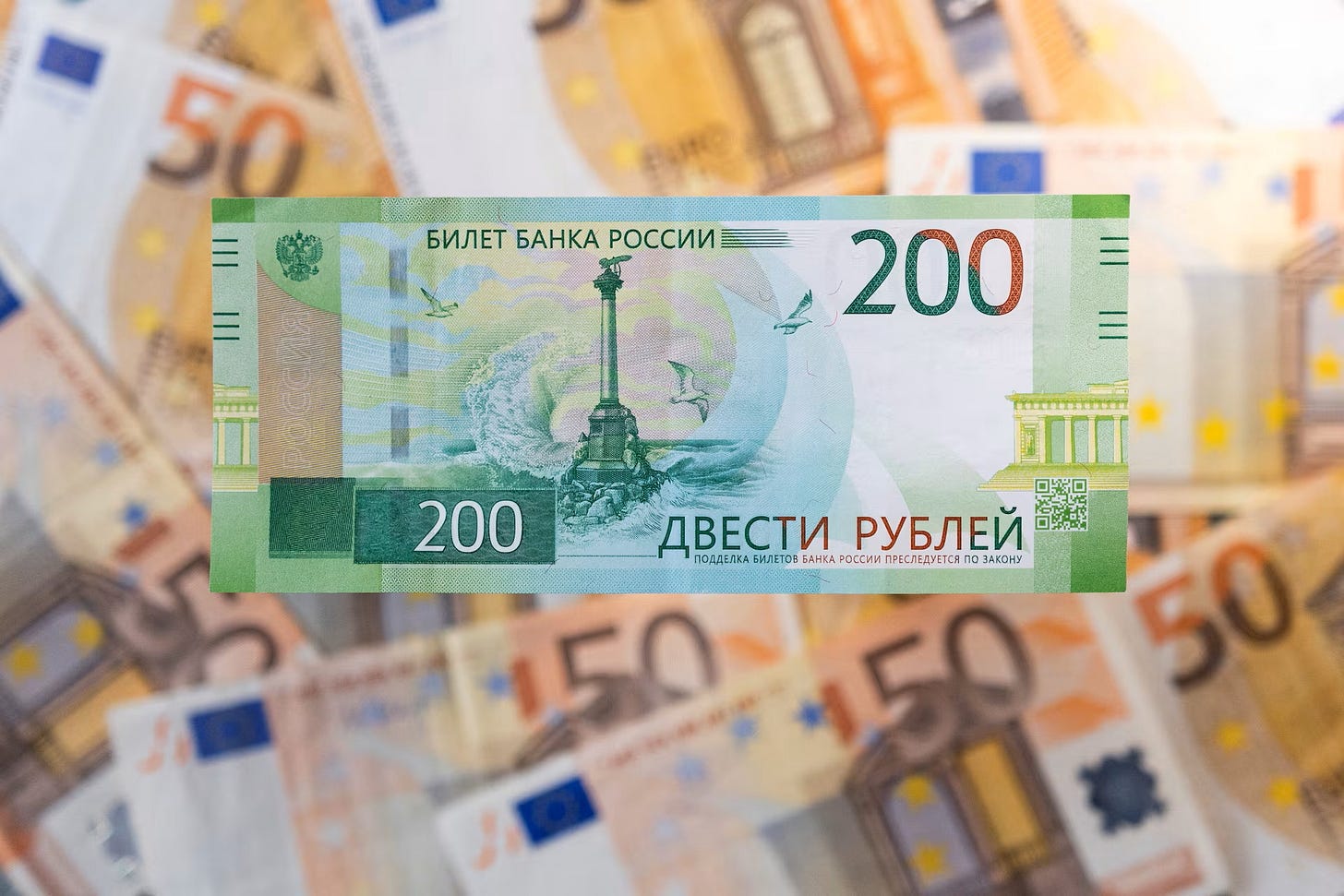

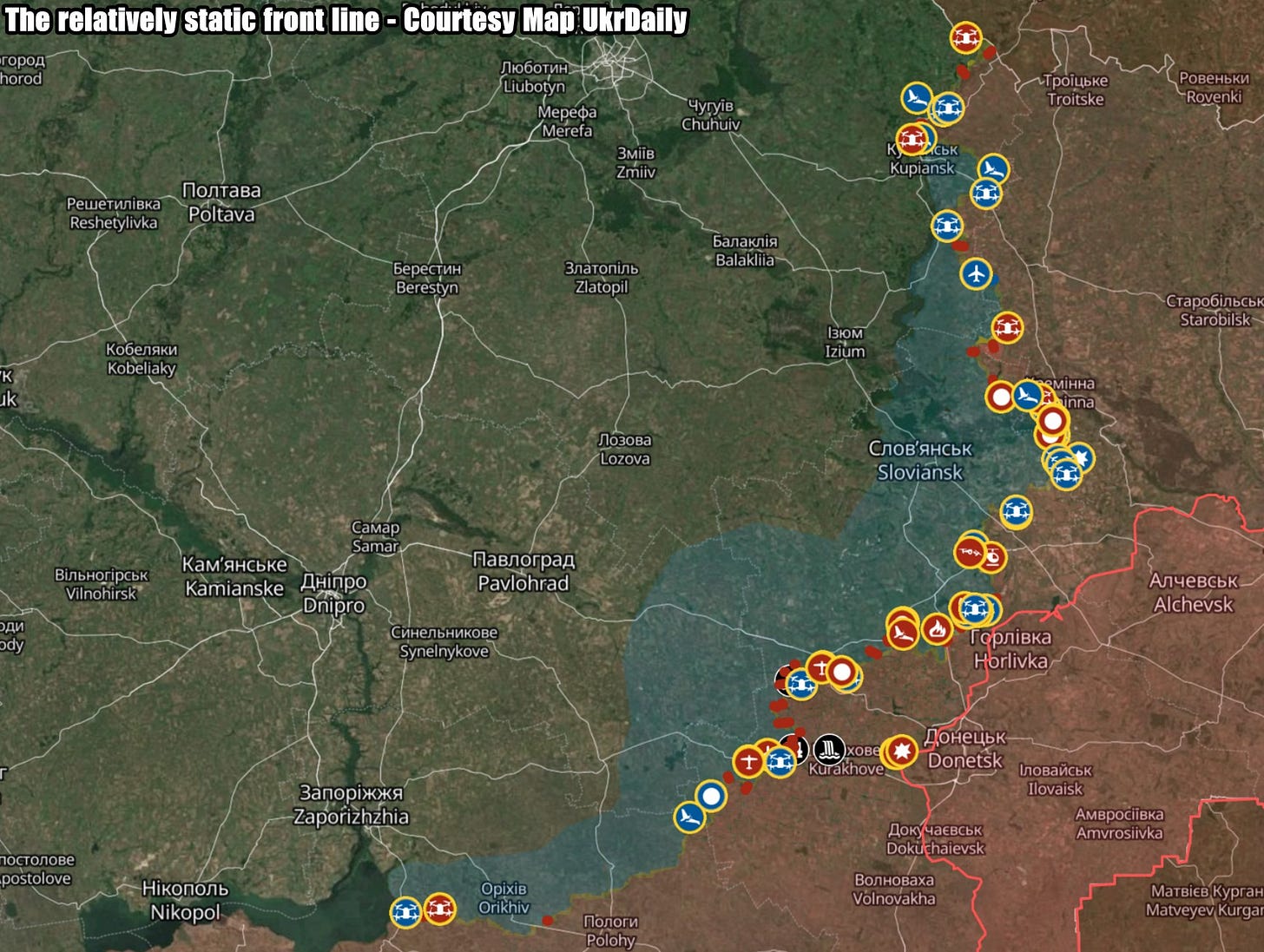
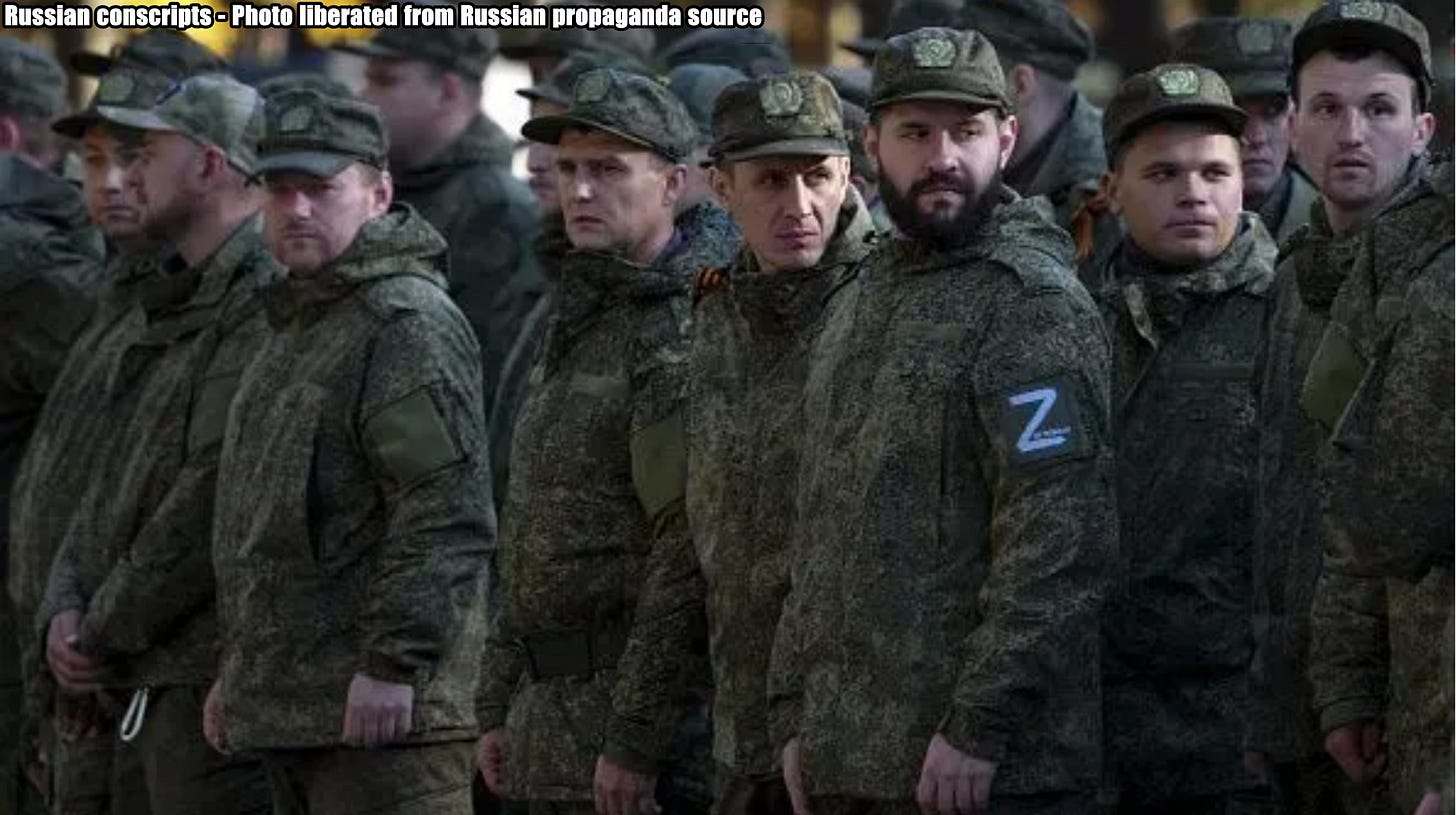

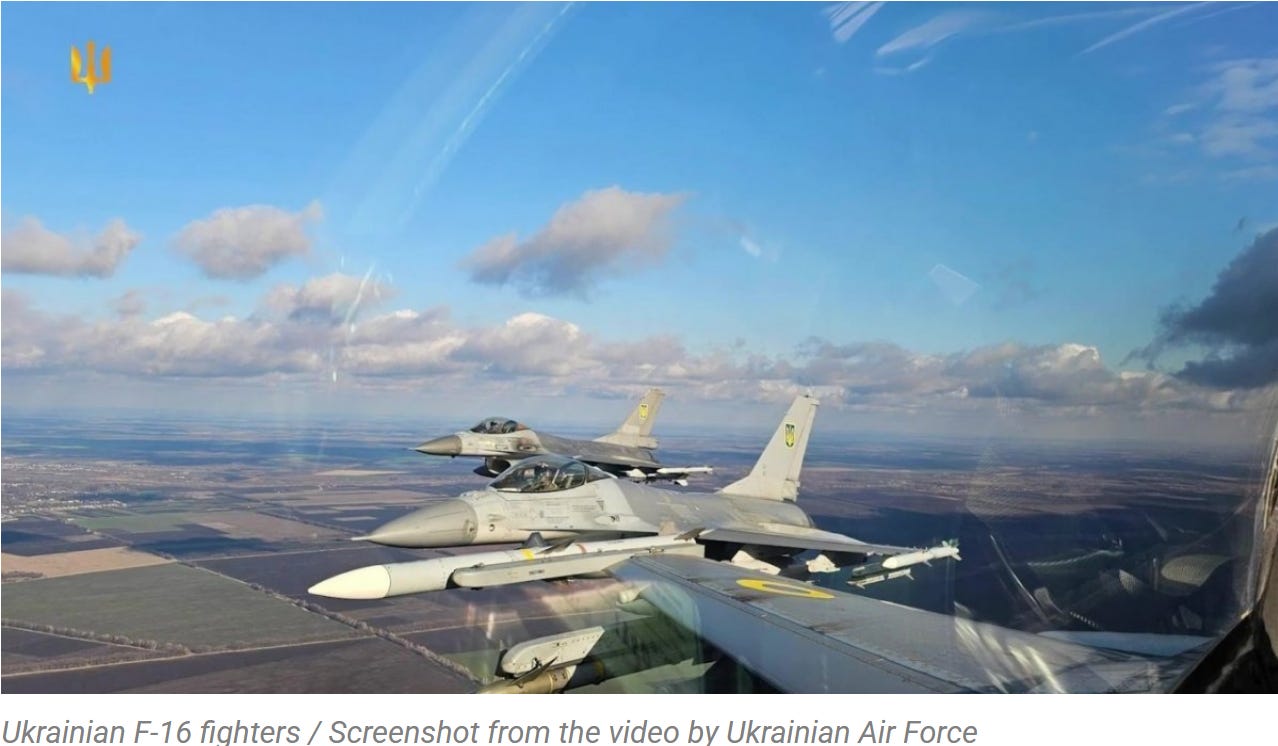
Stand Strong Ukraine stand strong !!!!